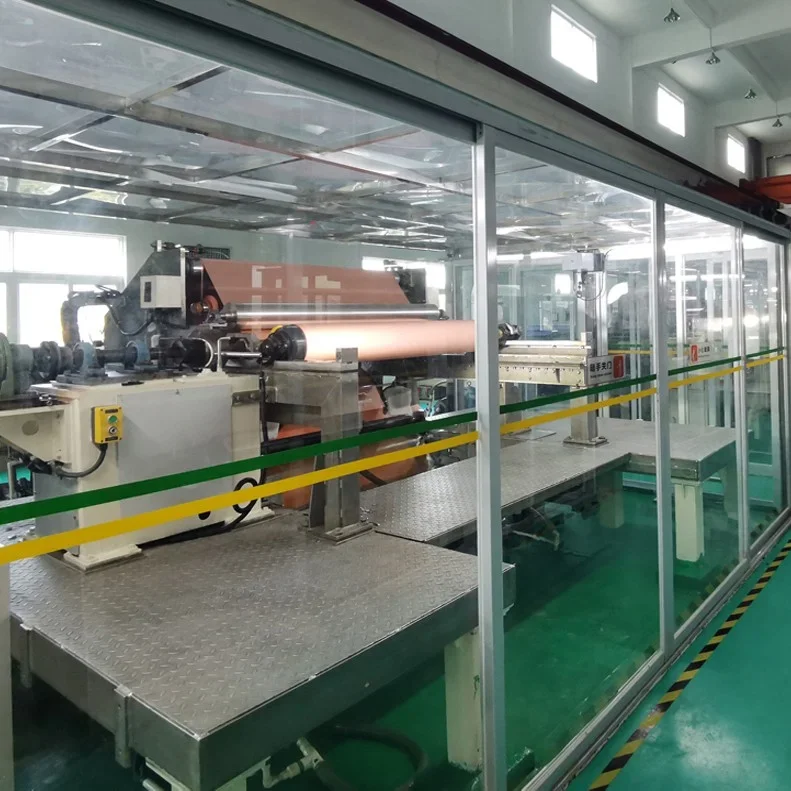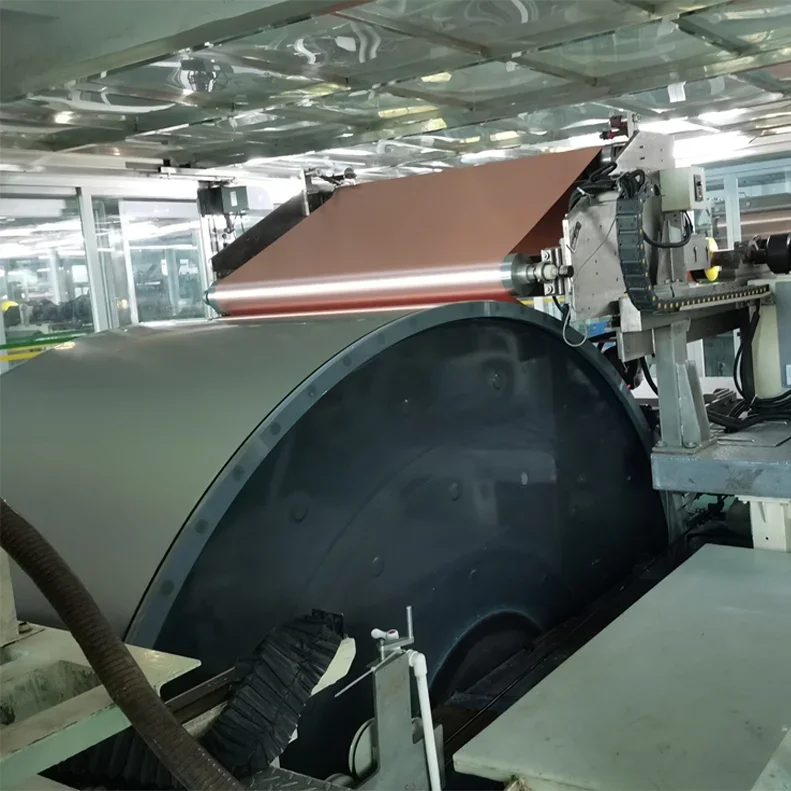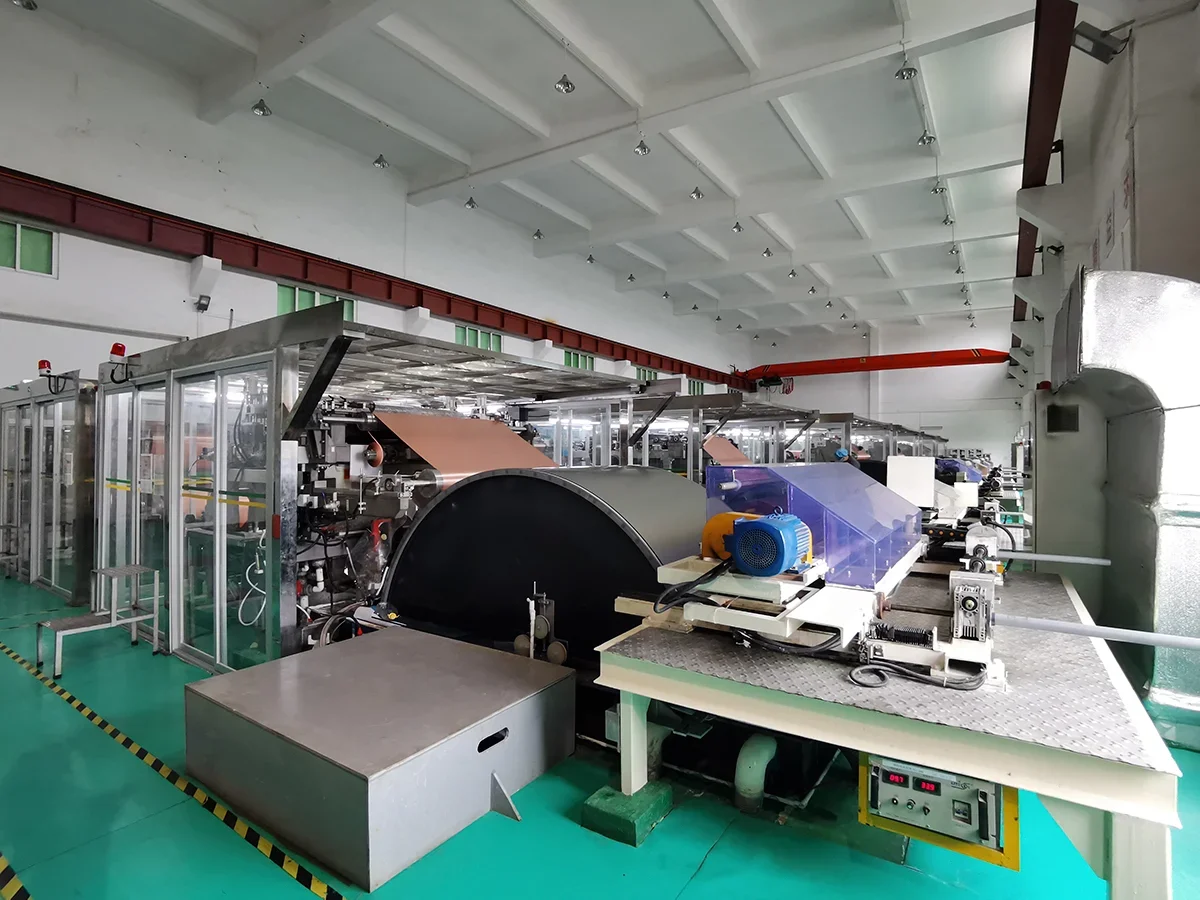In a world increasingly driven by electrification and high-performance electronics, electrolytic copper foil stands out as an essential material. From printed circuit boards (PCBs) to lithium-ion batteries, its applications are vast and crucial. However, behind every high-performance copper foil lies a complex process supported by advanced electrolytic copper foil equipment. This article explores the transformation journey from raw copper to ultra-thin, high-quality foil, highlighting the indispensable role of modern equipment in ensuring quality, efficiency, and scalability.
Understanding Electrolytic Copper Foil: What Is It?
Electrolytic copper foil is a thin sheet of copper produced via electro-deposition, where copper ions are reduced and deposited on a rotating drum. This method ensures high purity, consistent thickness, and excellent electrical conductivity. It is widely used in electronics for its excellent electrical and mechanical properties.
The demand for thinner, more reliable, and thermally stable copper foils—especially in EV batteries and high-frequency PCBs—has made the manufacturing process more complex and technology-driven than ever before.

The Starting Point: Raw Material Preparation
The process begins with copper cathodes, usually 99.99% pure, which are melted and processed into a solution for electro-deposition. At this stage, cleanliness, particle control, and purity are critical. Electrolytic copper foil equipment includes specialized copper dissolution systems to ensure a stable and contaminant-free electrolyte solution.
Advanced monitoring systems check for trace impurities, ensuring that only the highest quality raw material enters the production line. Any deviation at this stage can compromise the mechanical strength or conductivity of the final product.
Electro-Deposition: The Core Process
At the heart of the copper foil manufacturing process lies electro-deposition, where the real transformation occurs. Here’s how the equipment facilitates it:
1. Rotating Cathode Drums
High-precision rotating drums, often made from stainless steel or titanium, serve as the substrate for copper deposition. The electrolyte solution containing copper ions is continuously circulated around these drums.
Modern equipment ensures consistent drum speed, temperature control, and current density—factors that directly influence the thickness and grain structure of the foil.
2. Current and Temperature Control Systems
Copper deposition is sensitive to voltage, current, and temperature. State-of-the-art electrolytic copper foil machines use automated control systems to maintain optimal conditions. Real-time monitoring ensures that the copper crystallizes evenly and forms a smooth, defect-free surface.
Timonic’s Role in Powering the Copper Foil Industry
One company at the forefront of advanced electrolytic copper foil equipment is Timonic (Suzhou) Technology Co., Ltd (Timonic), a subsidiary of China Special Metal Group Limited (CSM). Timonic is dedicated to the development and production of new energy lithium battery material production equipment, including lithium battery copper foil machines and cathode rolls.
More than just an equipment supplier, Timonic provides a one-stop solution for high-quality lithium battery copper foil plant design, integrating mechanical and electrical intelligent equipment, software and hardware systems, and complete customized automation equipment. Their comprehensive technical services help global battery manufacturers streamline production and maintain competitive quality standards in an evolving market.

Post-Deposition Treatment: Creating Performance Characteristics
After deposition, the copper foil undergoes multiple post-processing steps—each requiring dedicated equipment to enhance performance attributes such as flexibility, adhesion, and corrosion resistance.
1. Surface Treatment Units
To enhance adhesion to resin or separator films (in the case of batteries), the foil is treated with micro-etching, oxidation, or roughening. Surface treatment units are precisely calibrated to apply uniform coatings or textures without compromising the foil’s structural integrity.
2. Anti-Tarnish and Heat-Resistance Coatings
Anti-oxidation coating machines apply thin chemical layers to protect the foil from environmental degradation. For battery-grade foil, heat-resistant coatings are added to ensure the foil remains stable under high operating temperatures.
Thickness and Quality Control: Precision Is Everything
Consistency is non-negotiable in copper foil production. Whether it’s a 6μm foil for a lithium battery or a 35μm foil for a PCB, precise thickness must be maintained across wide rolls.
1. Laser and Optical Inspection Systems
Electrolytic copper foil equipment integrates laser thickness gauges and optical scanners to detect any deviation or defect. These systems help maintain production standards and reduce waste.
2. Inline Defect Detection
Scratches, pinholes, or nodules can compromise the entire batch. Modern machines use AI-assisted cameras and sensors to identify and alert operators about microscopic defects in real time.
Cutting, Winding, and Packaging: The Final Steps
Once treated and inspected, the foil is ready to be converted into commercial rolls.
1. Precision Slitters
Slitting machines cut wide copper sheets into narrower rolls based on customer specifications. These high-speed slitters must handle ultra-thin foil without causing wrinkles or tears.
2. Auto Winding and Tension Control
To maintain structural stability, winding systems apply optimal tension control during roll formation. Packaging units then wrap and seal the final product in anti-static or moisture-resistant materials, depending on the application.
Environmental and Energy Considerations
With sustainability becoming a top priority, many manufacturers are upgrading their electrolytic copper foil equipment to meet energy efficiency and emission reduction targets. This includes:
Closed-loop electrolyte systems to minimize waste
Energy-efficient heating and cooling systems
Digitalized production management platforms for optimal resource usage
Timonic integrates these green technologies into its systems, helping customers align with global sustainability goals while maintaining production excellence.

Conclusion
From raw copper to high-performance copper foil, the process is about precision, innovation and excellent technology. Electrolytic copper foil equipment plays a core role in determining product quality and production efficiency. As demand continues to grow, choosing the right technology partner becomes increasingly important.
Companies like Taimonic (Suzhou) Technology Co., Ltd. can provide integrated equipment, factory solutions and expert services. If you need it, please contact us.
Working Principle And Optimization Strategy of Electrolytic Copper Foil Equipment